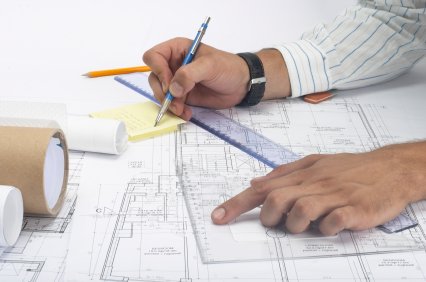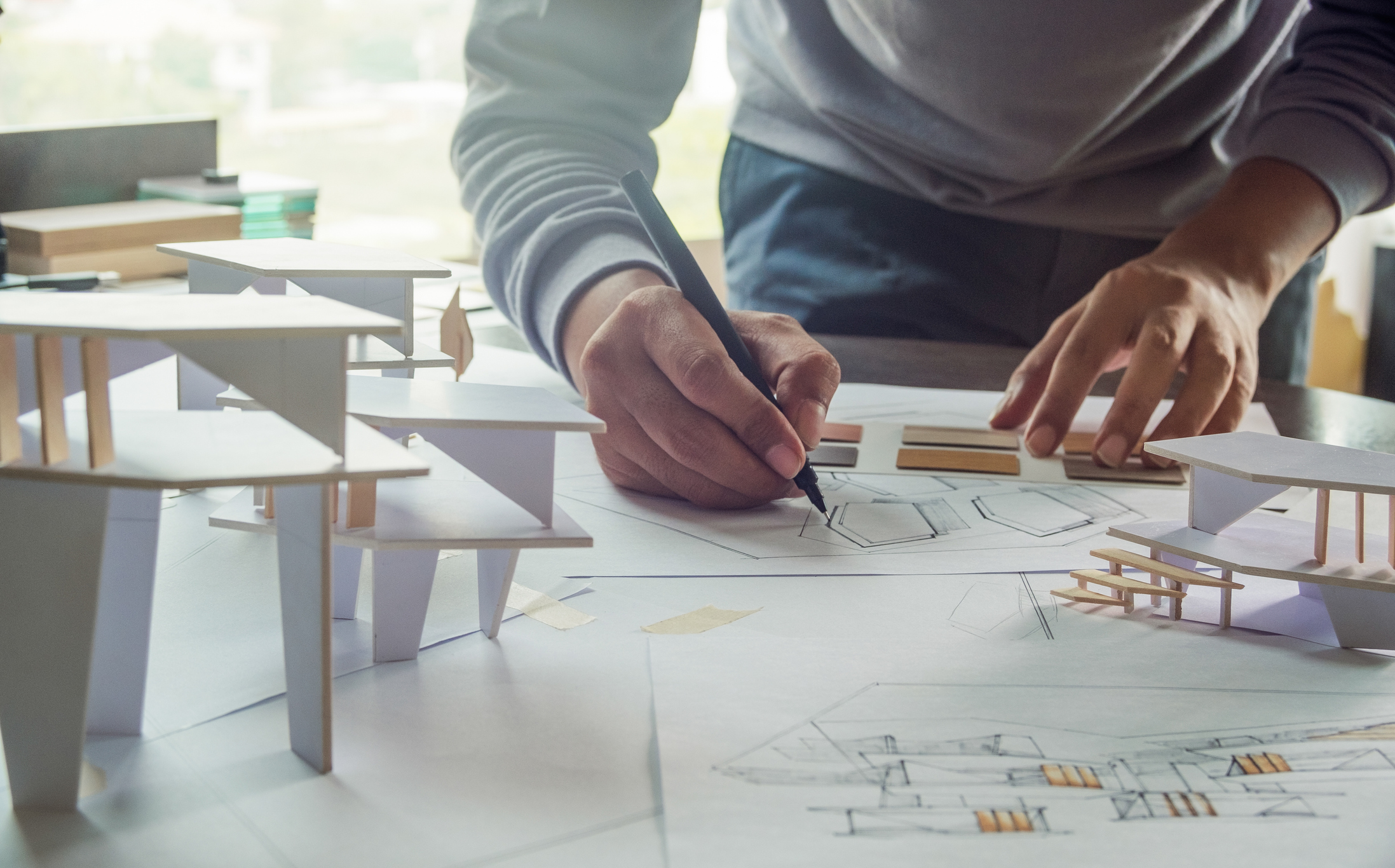Architect Design Trends to Follow in the Coming Season
Architect Design Trends to Follow in the Coming Season
Blog Article
Comprehending the Diverse Career Paths Available for Aspiring Architect
As an aspiring Architect, you have a globe of occupation courses waiting on you. Each course offers one-of-a-kind difficulties and possibilities to apply your creativity and technical knowledge. Whether you're attracted to conventional style or the nuances of sustainable style, there's a niche that lines up with your passions. Comprehending these varied alternatives can shape your expert trip, yet which direction will you pick to discover first?
Typical Style: Designing Structures and Structures
Conventional architecture concentrates on designing buildings and frameworks that blend functionality with visual charm. Your designs can show cultural heritage, showcasing local practices while meeting contemporary requirements.
You'll establish skills in preparing, model-making, and site analysis, permitting you to envision and communicate your ideas efficiently. Engaging with clients, you'll require to comprehend their vision and translate it into feasible designs.
In addition, constructing codes and sustainability techniques are vital in your work, ensuring your frameworks are secure and eco-friendly. As you expand in your job, you'll discover chances in domestic, business, and even reconstruction jobs, each offering distinct obstacles. Accepting conventional design leads the way for a satisfying career that pays tribute to the past while forming the future.
Urban Planning: Forming Communities and Public Spaces
As an ambitious Architect, you can play a necessary role as a city coordinator, changing exactly how neighborhoods operate and communicate. By using neighborhood engagement approaches, you'll ensure that homeowners have a voice in forming their setting. Plus, incorporating lasting style principles will certainly help develop spaces that not only fulfill today's requirements yet also secure the future.
Duty of Urban Planners
While lots of might consider engineers as the sole visionaries behind structures, urban coordinators play an important function in forming the wider landscape of areas and public spaces. They evaluate land usage, zoning legislations, and community needs to produce lasting settings that boost quality of life. By working together with numerous stakeholders, you'll aid develop parks, transportation systems, and property locations that advertise social interaction and access. Urban organizers also focus on environmental factors to consider, making certain that developments integrate eco-friendly areas and assistance biodiversity. Your knowledge in spatial layout and neighborhood dynamics enables you to visualize future growth while preserving social heritage. In this vital function, you'll straight influence how people experience their surroundings, making every job a possibility for favorable adjustment.
Neighborhood Interaction Methods
Efficient area involvement methods are vital for metropolitan coordinators to guarantee that the voices of residents are heard and valued in the preparation procedure. To cultivate significant discussion, you need to prioritize open online forums and workshops where neighborhood participants can express their concepts and worries. By actively listening and incorporating comments, you'll develop spaces that mirror the area's requirements, inevitably leading to more lasting and effective city settings.
Lasting Style Principles
When designing city rooms, integrating lasting style principles is crucial for producing atmospheres that thrive both environmentally and socially. Consider incorporating green areas, like yards and parks, to boost biodiversity and enhance air quality.
Creating with water preservation in mind is additionally key-- think of rain yards and permeable surfaces to manage stormwater. Involving area members throughout the preparation process guarantees that the spaces you produce satisfy their demands and motivate social interaction. By accepting these concepts, you'll add to vivid, lasting urban landscapes that profit every person.

Landscape Style: Creating Lasting Outdoor Environments
As you discover landscape design, you'll find important style concepts that produce attractive and useful exterior spaces. Sustainable methods play an essential function in ensuring these atmospheres prosper while lessening ecological impact. And also, you'll locate a variety of profession possibilities that enable you to make a real distinction in how people connect with nature.
Layout Concepts in Landscape
Comprehending style concepts in landscape style is crucial for developing sustainable outdoor settings that integrate with nature. You'll require to contemplate components like range, proportion, and balance to guarantee your layouts feel cohesive and inviting. Incorporating native plants not just improves biodiversity but likewise lowers water usage, making your landscape resilient. Believe about the flow of area and how people interact with it; paths and seating areas need to invite expedition and relaxation. In addition, take note of seasonal modifications, designing with products that match the surroundings year-round (Architect). By prioritizing sustainability and visual appeals, you can produce exterior areas that enrich the community and promote well-being. Embracing these principles will certainly establish a strong structure for your job in landscape style.
Lasting Practices Summary
Lasting methods in landscape style not only focus on aesthetics yet also prioritize environmental health and source conservation. By integrating native plants, you boost biodiversity and reduce the need for chemical plant foods and chemicals. Carrying out efficient watering systems helps preserve water and reduces runoff, protecting nearby environments. You can make rooms that advertise dirt health and wellness, such as practicing and utilizing organic products permaculture concepts. Additionally, incorporating eco-friendly facilities, like rainfall gardens and porous sidewalks, help Look At This in stormwater monitoring and lowers city warmth. When you produce outdoor settings with sustainability in mind, you add to a much healthier planet and supply spaces that cultivate area connection. Inevitably, these practices ensure your styles profit both people and the setting for several years to come.
Career Opportunities Expedition
With a strong foundation in sustainable techniques, landscape architecture offers a variety of profession paths that allow you to make a meaningful influence on the atmosphere. Urban planners frequently team up with landscape architects to develop eco-friendly areas in metropolitan settings, improving city look at this site livability. If you're passionate concerning education and learning, consider coming to be a landscape architecture instructor, inspiring future generations.
Sustainable Style: Focusing on Eco-Friendly Practices
As you discover your career in design, welcoming environmentally friendly techniques can set you apart in an affordable area. Sustainable design concentrates on creating structures that decrease environmental influence while improving resident well-being. By including renewable materials, energy-efficient systems, and lasting structure techniques, you'll add to a greener future.
Start by acquiring understanding of environment-friendly qualifications like LEED or BREEAM, which can strengthen your credentials. Consider exactly how all-natural light, ventilation, and thermal performance can optimize style. Collaborate with engineers and ecological consultants to innovate remedies that decrease waste and preserve resources.
Don't forget the importance of community participation-- engaging neighborhood stakeholders can influence styles that harmonize with the setting. As customers increasingly focus on sustainability, your competence in eco-friendly practices will not just draw in projects yet additionally fulfill your enthusiasm for accountable design. Embrace this crucial element of the occupation, and see your occupation flourish.
Historical Preservation: Shielding and Bring Back Social Heritage
While you start on your building trip, consider the crucial function of historical conservation in preserving our cultural heritage. This area concentrates on the defense and reconstruction of considerable structures, websites, and frameworks that tell the tales of our past. By participating in historical conservation, you'll assist safeguard the building heritage that shapes area identity.
As a historical preservation Architect, you'll assess historical significance and examine the problem of frameworks. You'll function carefully with chroniclers and preservationists to ensure authentic remediation strategies are employed. This career path permits you to blend creativity with research, enabling you to create services that appreciate original materials and workmanship.
Your job not only adds to sustainability by recycling existing structures yet additionally cultivates a feeling of satisfaction within neighborhoods. Accepting this course will assist you end up being a guardian of background, protecting the stories and aesthetic appeals that improve our lives.
Interior Style: Enhancing Indoor Spaces
Historic conservation and interior style both share a commitment to improving the built setting, yet they concentrate on various elements. While historical preservation highlights keeping a framework's cultural and historic value, interior design zeroes in on enhancing indoor rooms for performance and aesthetic appeals.
As a hopeful Architect, you'll find that interior architecture permits you to mix creativity with technological abilities. You'll develop areas that not only look good however also promote convenience and performance. This field entails understanding how light, shade, and materials communicate within a space, influencing state of mind and functionality.
You'll work on various jobs, from domestic homes to commercial offices, making sure that each atmosphere fulfills the demands of its residents. By focusing on user experience, you can transform interiors into motivating and useful spaces, making a significant effect on how individuals communicate with their surroundings. Accept the possibility to improve interior settings and shape the way people function and live.
Industrial Design: Combining Capability With Aesthetics
Commercial style plays a vital duty in creating items that perfectly blend aesthetics with capability, making certain that what you utilize daily is not only visually enticing however also functional. As an aspiring Architect, you might immerse yourself in this area, concentrating on developing every little thing from furnishings to customer electronic devices. Your work includes comprehending user needs, materials, and making processes, allowing you to create ingenious remedies that enhance click to read more day-to-day experiences.
In industrial layout, you'll often team up with marketing professionals, suppliers, and designers, making sure that your layouts are not only beautiful however additionally viable. You'll find out to stabilize kind and function, focusing on use without giving up style. By developing your skills in sketching, 3D modeling, and prototyping, you'll be fully equipped to bring your concepts to life. This career course supplies a vibrant environment where imagination meets usefulness, making it a satisfying choice for designers interested in shaping the products of tomorrow.
Often Asked Questions
What Educational Credentials Do I Required to Come To Be an Engineer?
To become a designer, you'll require a professional degree in style, commonly a Bachelor's or Master's. In addition, you'll need to finish an internship and pass the Architect Enrollment Evaluation to exercise legally.
Are There Certification Requirements for Different Building Career Paths?
Yes, there're qualification requirements for different architectural courses. Architect. You'll need to pass exams, full teaching fellowships, and often seek specialized training, depending on your chosen focus, like landscape design, city design, or historical conservation
What Software Application Abilities Are Vital for Engineers Today?

How Can I Gain Practical Experience While Studying Architecture?
You can gain functional experience by interning at architectural companies, taking part in design competitors, offering for community projects, or teaming up with classmates on real-world assignments. These possibilities boost your skills and construct important links in the sector.
What Work Opportunities Exist Outdoors Traditional Style Firms?
You can discover numerous task opportunities outside typical architecture firms, like city preparation, interior decoration, landscape design, building and construction management, genuine estate development, or perhaps roles in sustainability consulting. Each deals distinct difficulties and rewards.
Whether you're attracted to conventional design or the nuances of sustainable layout, there's a specific niche that aligns with your interests.When developing city areas, integrating sustainable layout principles is important for developing settings that grow both ecologically and socially.As you discover landscape architecture, you'll uncover essential style principles that create practical and stunning outside spaces.Recognizing layout principles in landscape design is crucial for producing lasting outdoor settings that integrate with nature.In industrial style, you'll frequently work together with engineers, suppliers, and marketing professionals, making certain that your designs are not just beautiful but also viable.
Report this page